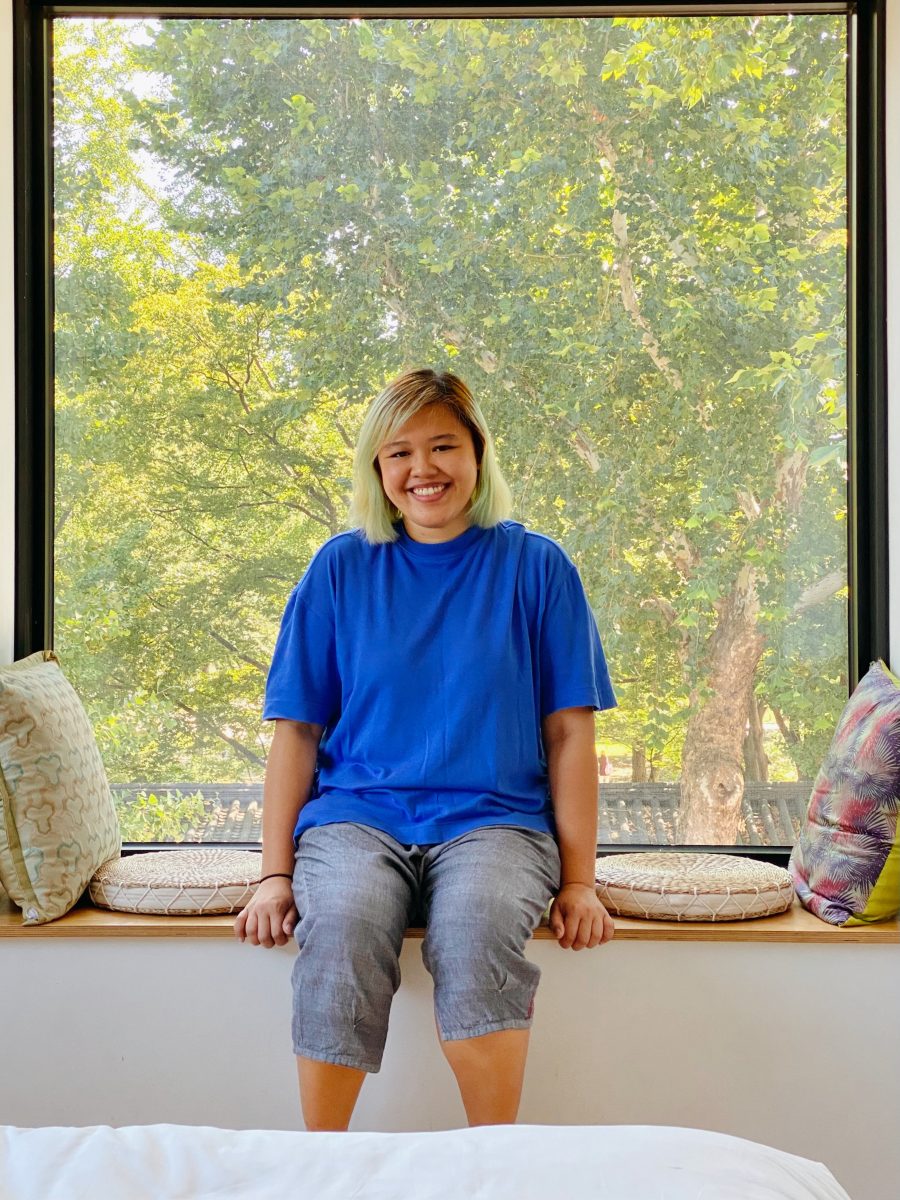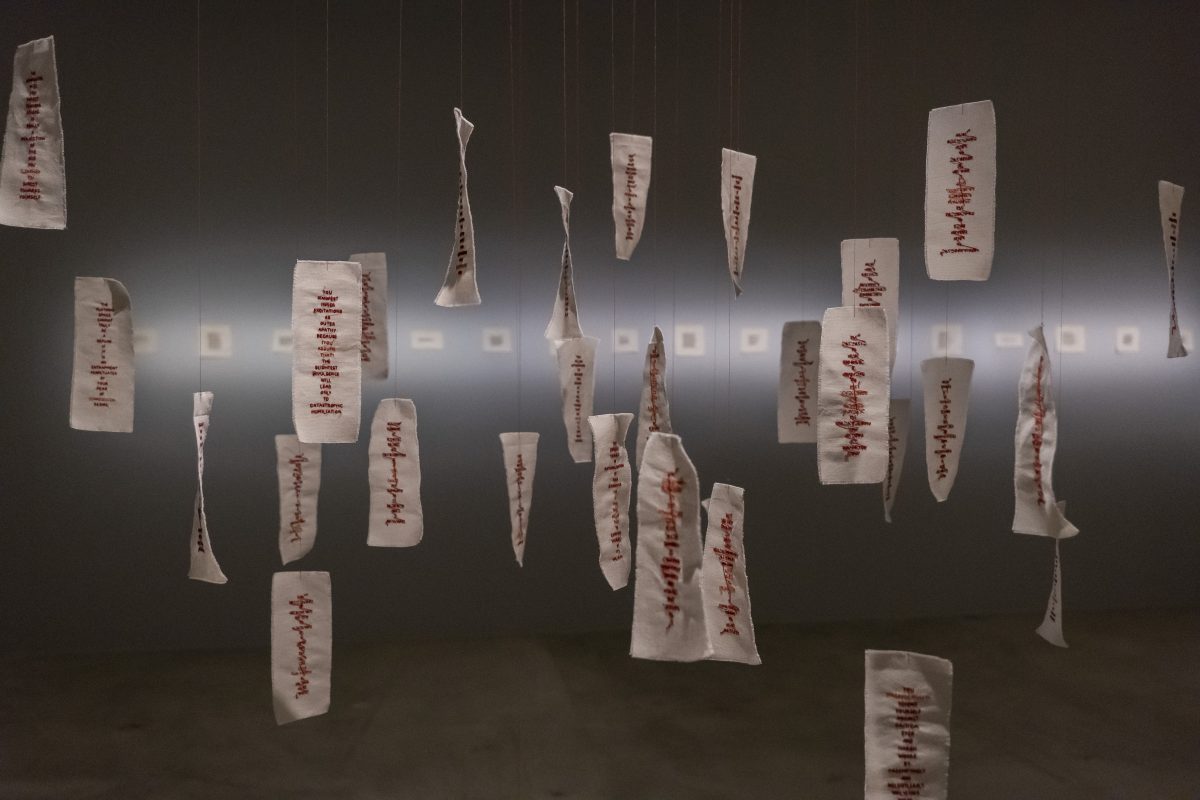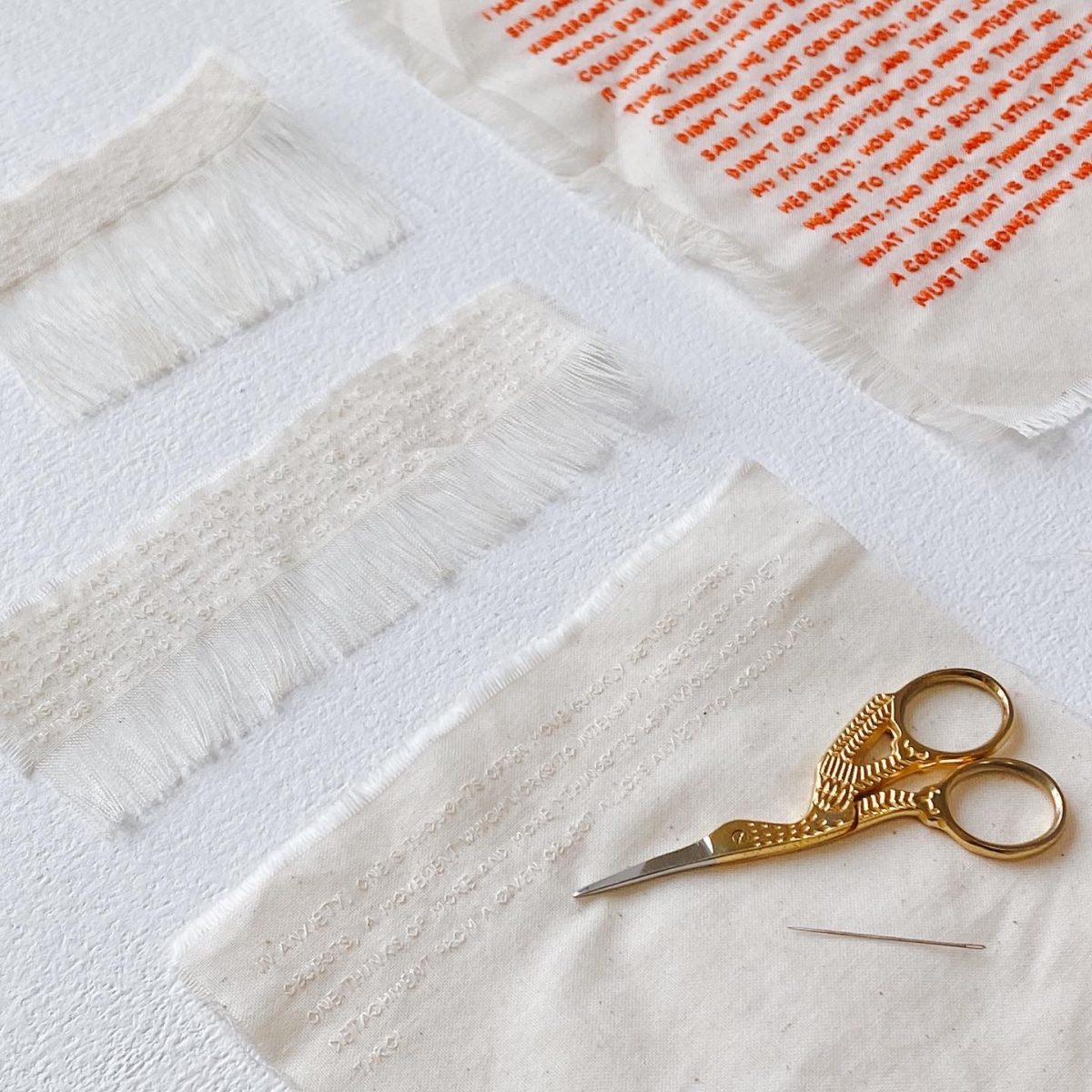1. 자기소개 Could you give us a brief introduction of yourself?
저는 싱가포르에서 온 작가/큐레이터 Berny Tan 입니다. 지난 2년 정도는 전시기획을 주로 했습니다. 큐레이터로서 저는 이론이나 개념보다는 작가가 물질, 매체와 맺는 관계에 중점을 두고 전시를 기획합니다. 제 자신도 작가이기 때문에 저는 다른 작가들이 저와는 어떻게 다른 방식으로 작업에 임하는지 탐구합니다. 그렇기에 제가 기획하는 전시는 창작자가 어떤 재료를 어떻게, 왜 사용하는지 이해하려는 저의 노력이기도 합니다. 예를 들어, 최근 제가 기획한 단체전은 처음에 “드로잉”이라는 매체를 다루기 위해 시작되었지만 결국에는 우리가 통상적으로 드로잉이라 칭하는 작업의 범위 바깥에 있는 작가들도 포함하게 되었습니다. 드로잉에 대한 탐구 끝에 드로잉은 점차 특정한 매체가 아닌, 작가들이 각기 다른 생각들을 실험하는 하나의 감각 방식이 된 것입니다.
작가로서 저의 작업은 특정 매체로 국한하지는 않으나 느슨하게 두 갈래로 묶어볼 수 있을 것 같습니다.
하나는 자수 작업입니다. 저는 자수를 수놓는 과정 속 반복적이고 때로는 강박적인 그 행위에 관심을 갖고 있습니다. 기본적인 재료와 기법을 이용해, 저는 텍스트나 텍스트로부터 도출된 추상적 패턴을 만듭니다. 이 텍스트는 제가 쓴 것이거나, 다른 사람들이 써준 것이거나, 책에서 찾은 것입니다. 자수는 한땀한땀마다 내려야 하는 결정의 집합입니다. 이러한 자수 작업의 느린 속도는 텍스트를 읽는 행위 자체를 느려지게 하고, 결국 텍스트를 더 오래 마주하게 합니다.
또 다른 제 작업의 한 갈래는 다이어그램이나 그래프 등으로 표현되는 시각적 언어입니다. 겉으로 보기에 과학적인 모양과 형태를 이용하여 쉽게 수치화 될 수 없는 것들을 다룹니다. 예를 들어 개인적인 경험이나 문학의 해석 같은 것 말이죠. 이 작업은 제가 세계를 경험하는 방식을 제 자신에게 이해시키려는 시도입니다. 그렇기에 작업의 결과물인 다이어그램은 객관적이거나 깔끔하게 표현될 필요가 없죠. 작업 과정에서 저는 최대한 느슨함을 유지하려 노력합니다.
작가로서, 또 기획자로서 저는 주관적인 시스템들, 그리고 시스템적인 주관성을 다룹니다.
I am an artist and an independent curator from Singapore. I have been mostly curating for the past couple of years. My curatorial practice comes from my interest in an artist’s relationship with the material and the medium, rather than certain ideas or theories. Being an artist myself drives my curatorial practice. Because I am an artist, I am interested in how other artists make work in ways that are different from mine. Through the exhibitions that I curate, I try to understand why and how the artists work with certain material in the ways that they choose. For example, there was a recent group show that started as a “drawing” exhibition but ended up including a lot of artists who didn’t work with traditional methods of drawing. The “drawing” organically became more of a sensibility than a medium, with which artists try out different ideas with openness.
My art practice can loosely be grouped into two threads, although I do not confine my practice to specific media.
One is embroidery. I’m interested in the obsessive, repetitive process within the act of embroidering. Using basic materials and techniques, I embroider text or patterns that are driven from text that I’ve written myself, that other people have contributed, or that I have found in books. Embroidery is a series of small decisions that you keep making with every stitch. The slowness of this process also slows down the reading of the text and forces me to sit with the text for longer.
The other branch of my work involves the visual language of diagrams and graphs. I employ this seemingly scientific forms and shapes to visualize things that cannot readily be translated into graphs—for example, personal experiences or interpretation of literary text. This is an attempt to make sense of my experience of the world, so the diagrams are not meant to appear objective or neat. I try to maintain a sense of looseness with the material I work with.
You could say both my art practice and curatorial practice deals with the systems being subjective and the subjective being systematic.
2. 어떻게 보안1942와 보안스테이를 알게 되었나요? How did you learn about the space?
뉴욕에서 학교를 같이 다녔던 친구가 있습니다. 지금 전주에 살고 있는데요. 제가 서울에 있는 동안 저를 만나러 왔는데, 그 때 <블루 플래닛—바다> 전시를 보러 이곳에 왔었습니다. 보안1942 내에 다채로운 공간들이 마음에 들었습니다. 다양한 공간들 전체에 일종의 “혼종”성이 느껴지는 점이 좋았습니다. 사실 싱가포르에서 공간을 운영할 계획을 갖고 있어서, 보안스테이에서 머물며 공간 운영을 좀 더 살펴보고 싶었습니다.
I have a friend that I went to school with in New York. She currently lives in Jeonju. She came to visit me in Seoul and took me here to see the exhibition Blue Planet—Sea. I liked the variety of spaces that BOAN1942 has to offer. There is a feeling of hybridity across different spaces, which I enjoyed. Because I am planning on running an art space myself in Singapore, I thought I would try staying at Boanstay to learn more about how this place is run.
3. 왜 한국을 방문하셨나요? What brings you to Korea?
지난 2개월 반 동안 국립현대미술관 고양 레지던시에 있었습니다.
I was doing a residency at MMCA Goyang for the past two and a half months.
4. 보안스테이에서의 경험은 어떠셨나요? How was your experience staying at Boanstay?
사실 예상보다 일찍 레지던시를 떠나야 하는 상황이었습니다. 마무리해야하는 일들이 있었는데, 보안스테이에서 창문 너머로 펼쳐지는 산과 궁을 보며 일할 수 있어서 좋았습니다. 저는 원래 뻥 뚫린 뷰가 있으면 일을 더 잘 할 수 있거든요. 뇌에도 공간이 생기는 느낌이라서요. 보안스테이는 딱 제가 원하는 뷰를 제공해주었습니다.
위치도 굉장히 편리했습니다. 특히 근처에 다양한 전시 공간들이 많아서 좋았습니다. 내가 지금 예술을 환대하는 곳에 있구나 하는 느낌이 들었거든요. 저는 기획자로서 전시 공간의 경험과 작업이 공간과 대화하는 방식을 다루기 때문에, 근처의 전시 공간을 방문하여 다른 이들은 어떻게 전시를 만드는가를 리서치할 수 있었습니다.
I had to leave the residency earlier than expected. I had some work to finish up, and it was nice to be able to work while looking at the mountains and the palace through the window. I know that I work better when I have an open view in front of me; it helps me feel like my brain also has some space. This place offered exactly that.
The location was very convenient as well. I enjoyed the neighborhood as it has a variety of exhibition spaces around. It was nice to know that I’m in a space that is hospitable to art. You could say it is a part of my research to go to these exhibitions and see how other people “make” exhibitions, as my curatorial practice mostly concerns the experience of the space and how artists’ works converse with the space.










